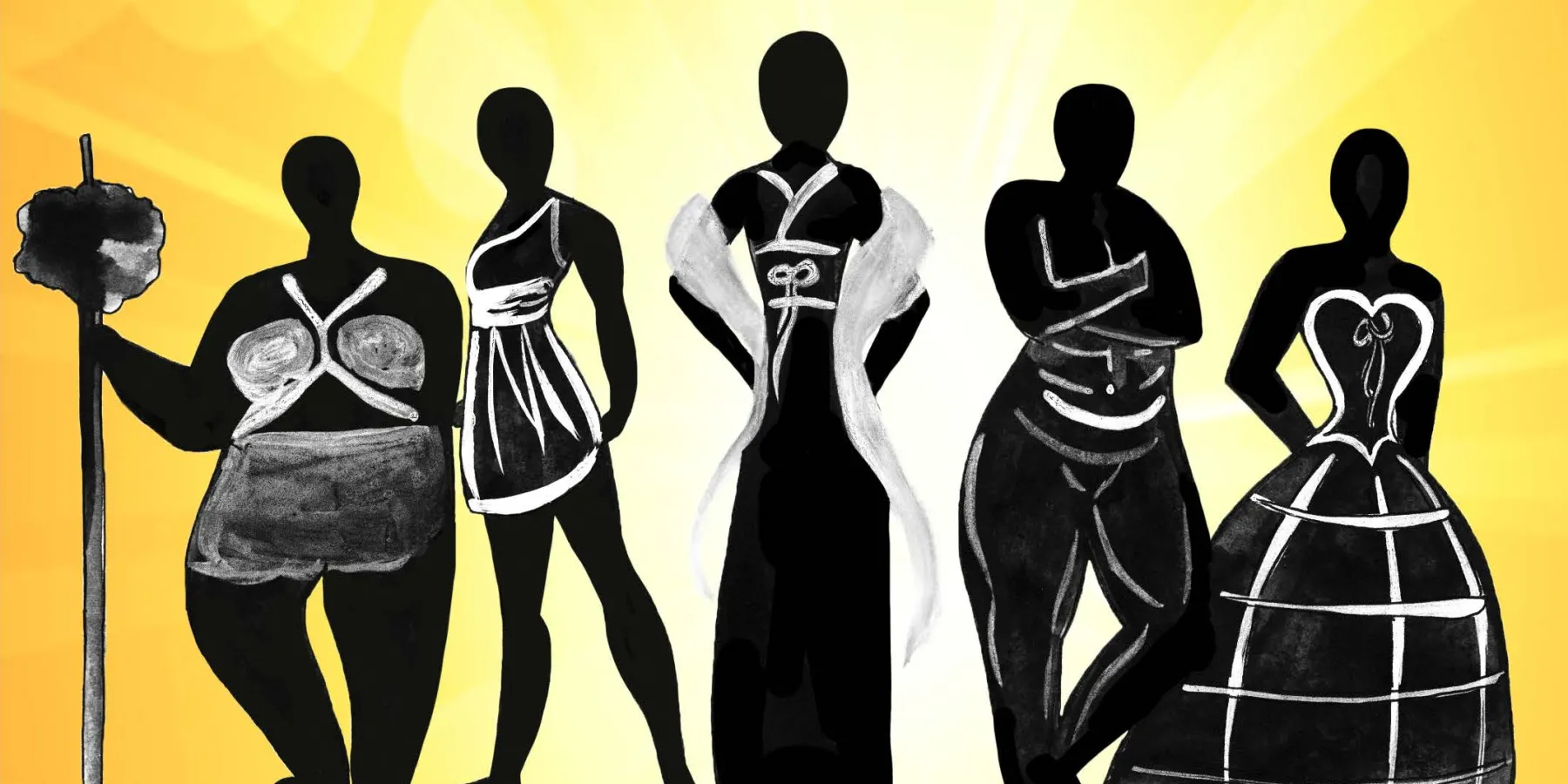Abstract
The Body Issue: What Global and Historical Perspectives of the Ideal Female Body Can Teach Us About Our Own Present-Day Bodies is a graphic memoir that explores cultural and social factors that influence women’s body image and restrict their decisions about their bodies. Drawing from historical and contemporary sources, such as advertisements, magazines, and body satisfaction surveys, as well as personal experience, the memoir offers insight into the cultural and social overemphasis on women’s physical appearance. This article summarizes key points from The Body Issue and invites readers to consider bodies as a means to individuality instead of assimilation.
Figure 1. The Body Issue, front piece
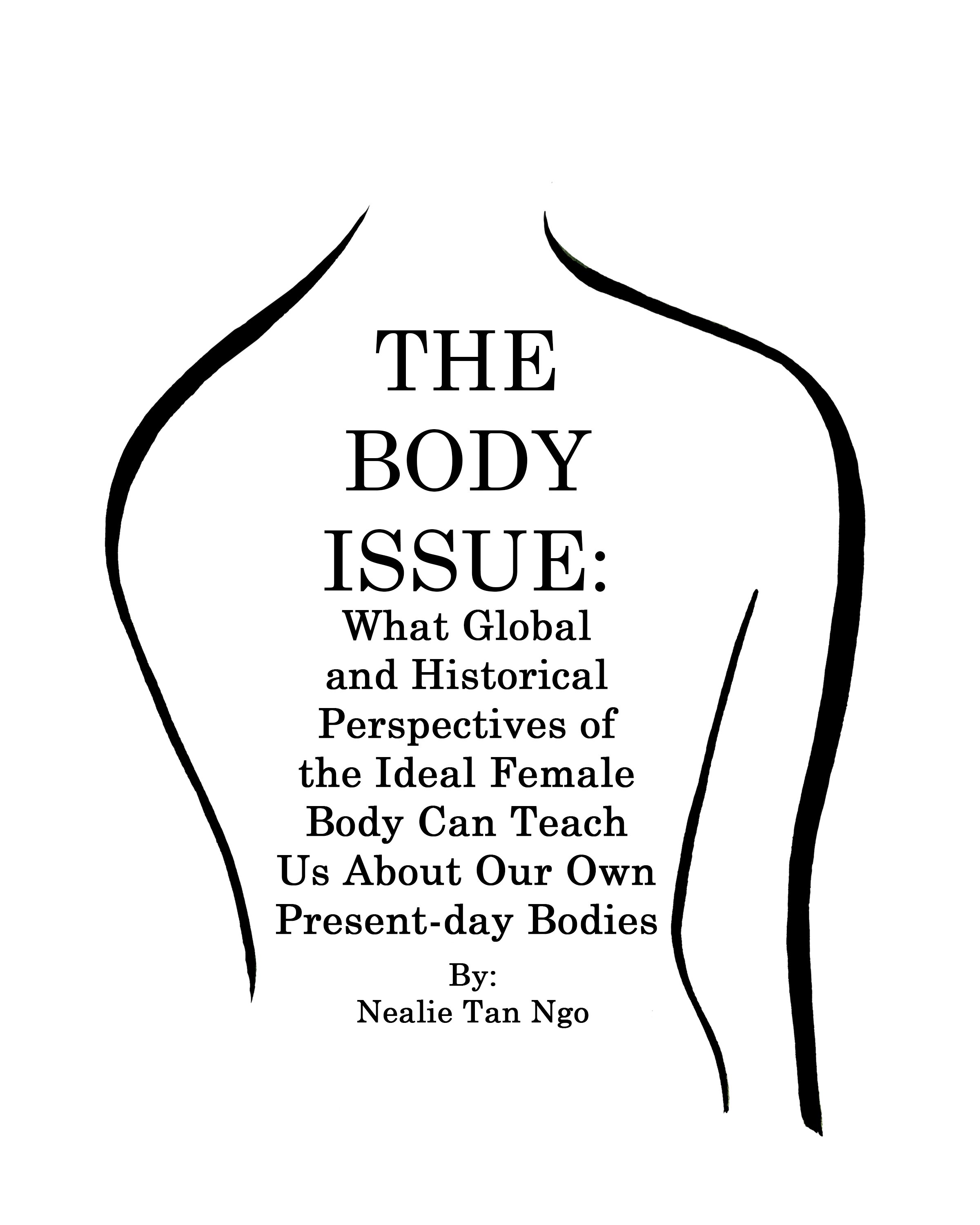
Body Image Struggle
The first time I remember wanting to change the way I looked wasn’t because I wanted to be healthier: it was because I wanted to be prettier. It happened while I was at the mall, shopping with my mom. I was young—around 10 years old—and we were walking past a window display filled with prom dresses. “You’re too fat to wear that,” my mom said, pulling me away from the window front.
Figure 2. Mom’s Judgment, panel 1
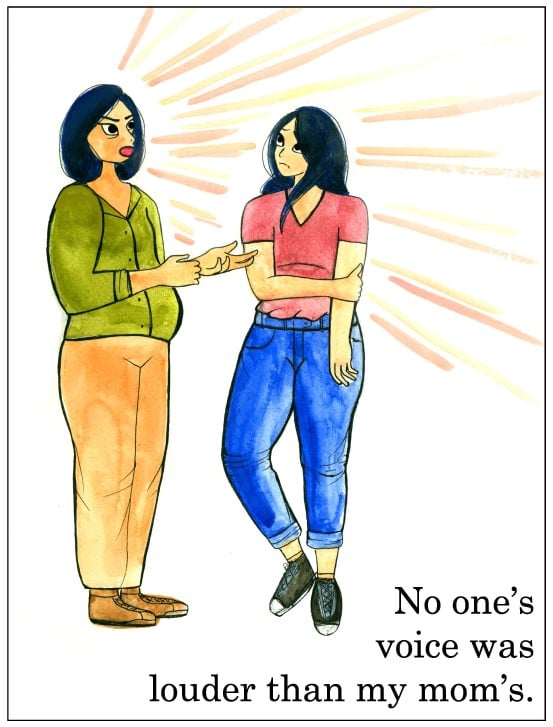
Figure 3. Mom’s Judgment, panel 2
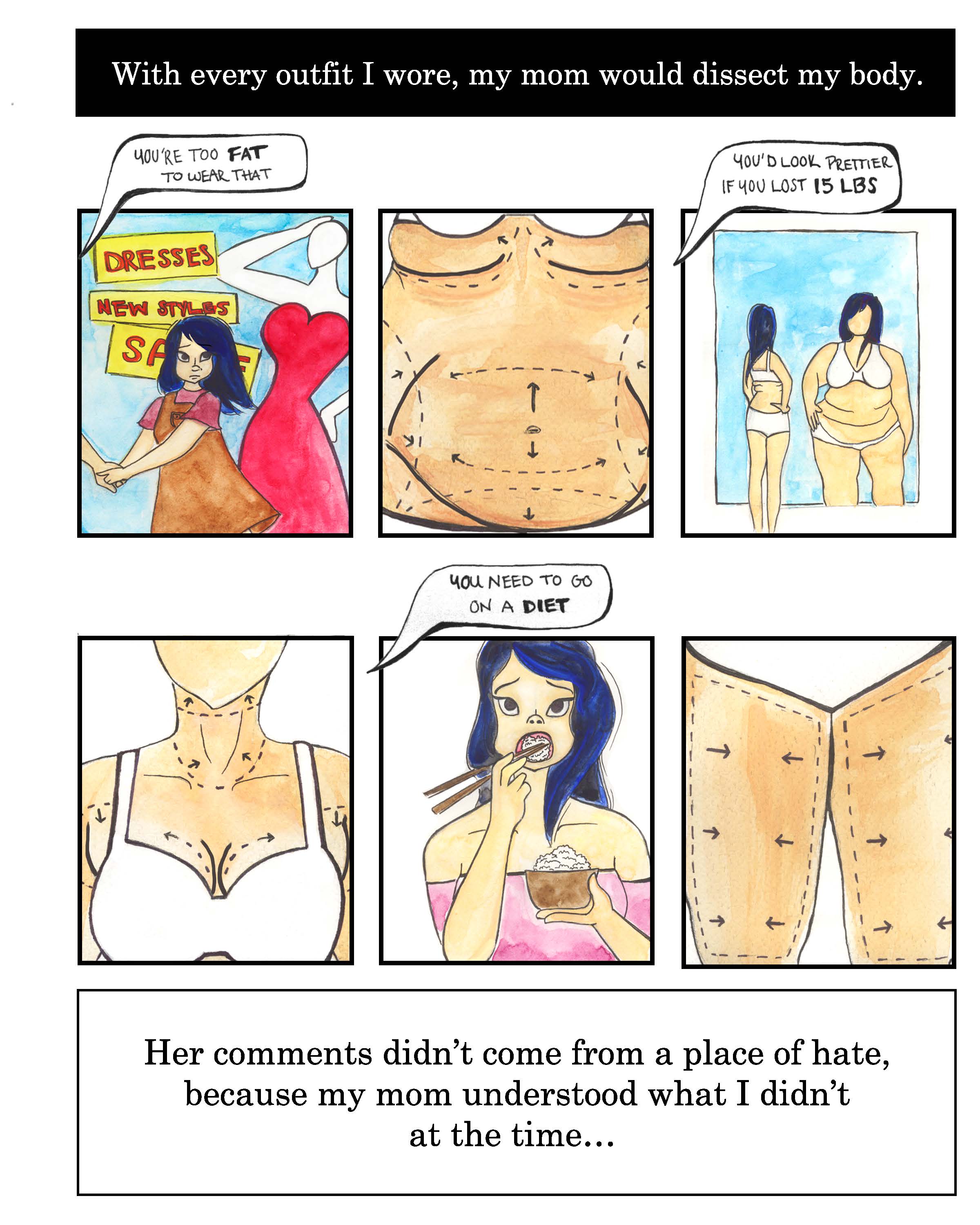
I already knew that I was larger than some children my age, but I never thought of my size as rendering me incapable of doing something. Two weeks later, I went to my yearly pediatric visit with my mom, at which the clinician suggested a healthier diet and more exercise to improve my long-term health. I was sent home with a pamphlet depicting the food pyramid, but the only thing I remember from it was the cover, which depicted a cartoon of a tall, lean, and athletic-looking girl, both hands proudly perched on her slim waist. “That’s what I want my daughter to look like!” my mom chuckled as we left.
My health was the last thing on my mind when I first began dieting. All I really wanted was to fit into that dress. I wanted to look like all the other tall, slim Asian girls in my class—because they could all probably fit into that dress. Most of all, I wanted to prove my mom wrong: I am skinny enough, good enough, and worthy enough to fit into that dress. I never realized that at such a young age I had already started measuring my success and self-worth by my body’s appearance, thinking that I had to look a certain way to even be worth looking at.
Media Body Images
The prevalence of poor body image, especially among women and girls, is evident in the medical literature. For example, a 2017 Australian survey of 24 055 young people ages 15 to 19 years found that 87.9% of adolescent girls were concerned about their bodies.1 The survey also found that body image ranked third in issues of personal concern for both genders (behind coping with stress and school or study problems),1 a trend that has been consistent since 2013.2,3,4,5 Another study found that, over time, more girls consider themselves to be “too fat,” with slightly more older girls than younger girls reporting feeling too fat (45.5% v 40.9%).6 The study also found that girls increasingly dieted as they grew older.6
Statistics like the above prompt us to wonder: How did we get here? Why do we have a global epidemic of poor body image among children as young as five years old?7 Why must a woman’s waist be thinner than a standard 8.5" x 11" piece of paper in order for her to be considered beautiful?8 Body dissatisfaction has detrimental effects on health and is associated with impaired emotional well-being, low self-esteem, elevated depressive symptoms, low physical activity, and disordered eating.9,10,11,2,13,14,15 Body dissatisfaction is now even a potential issue for children of primary-school age.16
Historical Highlights
I both wrote and illustrated The Body Issue, a personal and historical graphic memoir that explores largely western narratives of women’s bodies that have global implications. The memoir explores “ideal” bodies and attempts to investigate sources of pressure—especially on young girls today—to achieve a “perfect” body, despite the fact that no such thing exists. Through historical and cultural case studies that speak to certain bodily ideals and why women were expected to achieve them—with parallels to the present day—the memoir also aims to document the historically fluid definition of ideal to help inform current conversations about body image and to place my own story in that history. I argue for the importance of viewing one’s body as a source of personal empowerment, regardless of how well it conforms to an ideal body type. The memoir also addresses my own struggles with body image, how my mother helped shaped those struggles, and how both have influenced my life.
In what follows, I present selected images from The Body Issue in the context of discussion about the ideal female body—past, present, and future.
Figure 4. Women Must Be Small
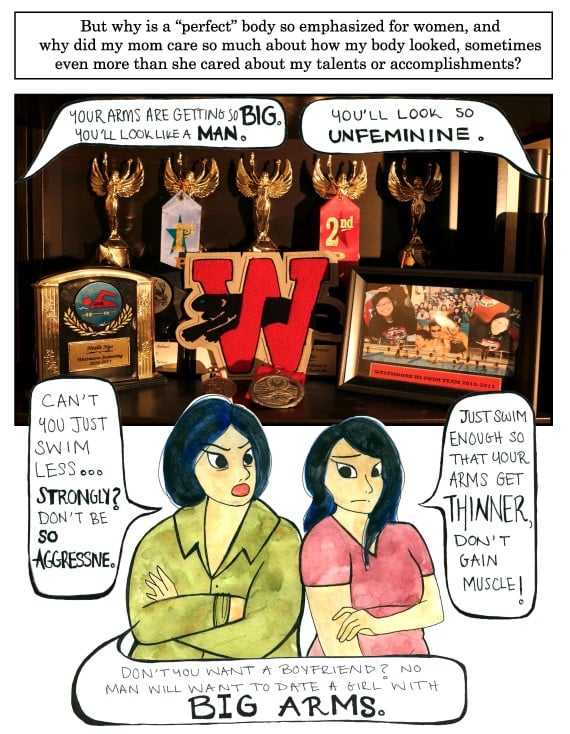
Figure 5. Survival Decisions
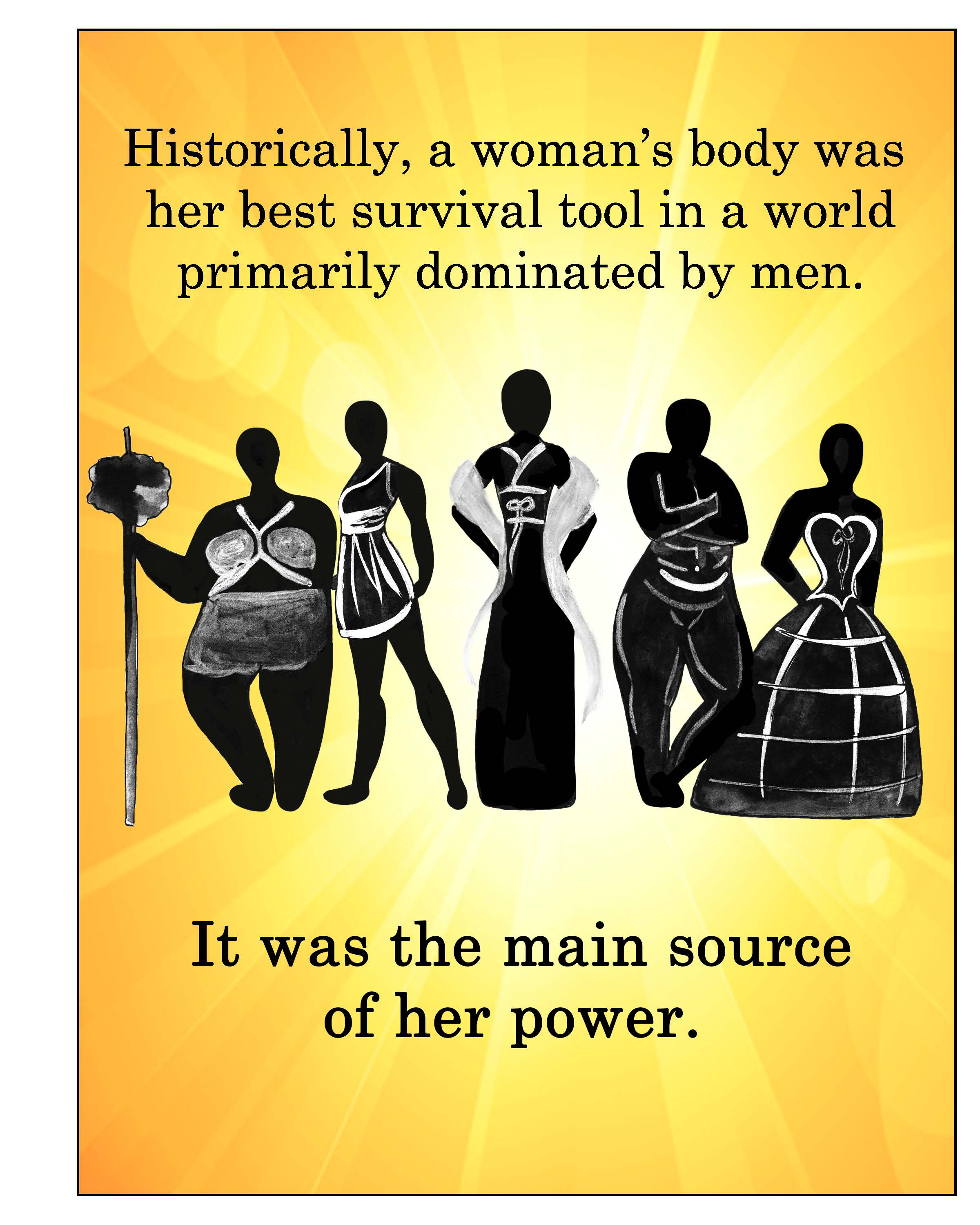
Historically, a woman’s body was her best survival tool in patriarchal societies; expectations about a woman’s size and physical characteristics were dictated “by male desire and marriageability.”17 Therefore, a woman’s body, appearance, and health were (and still are) heavily influenced by social and cultural ideologies, beliefs, and values as well as by technology.18 In turn, these influences tend to work by restricting the notions of selfhood available to women, forcing women to make decisions to comply with social and cultural demands that they transform their bodies into an idealized shape. An idealized physical body becomes a social body,19 and, as Deborah Sullivan notes, it “bears the imprint of the more powerful elements of its cultural context … providing important clues to the mechanics of society.”20 Historically, bodies closer in appearance to ideal bodies gave some women power.
Figure 6. Victorian Ideal, panel 1
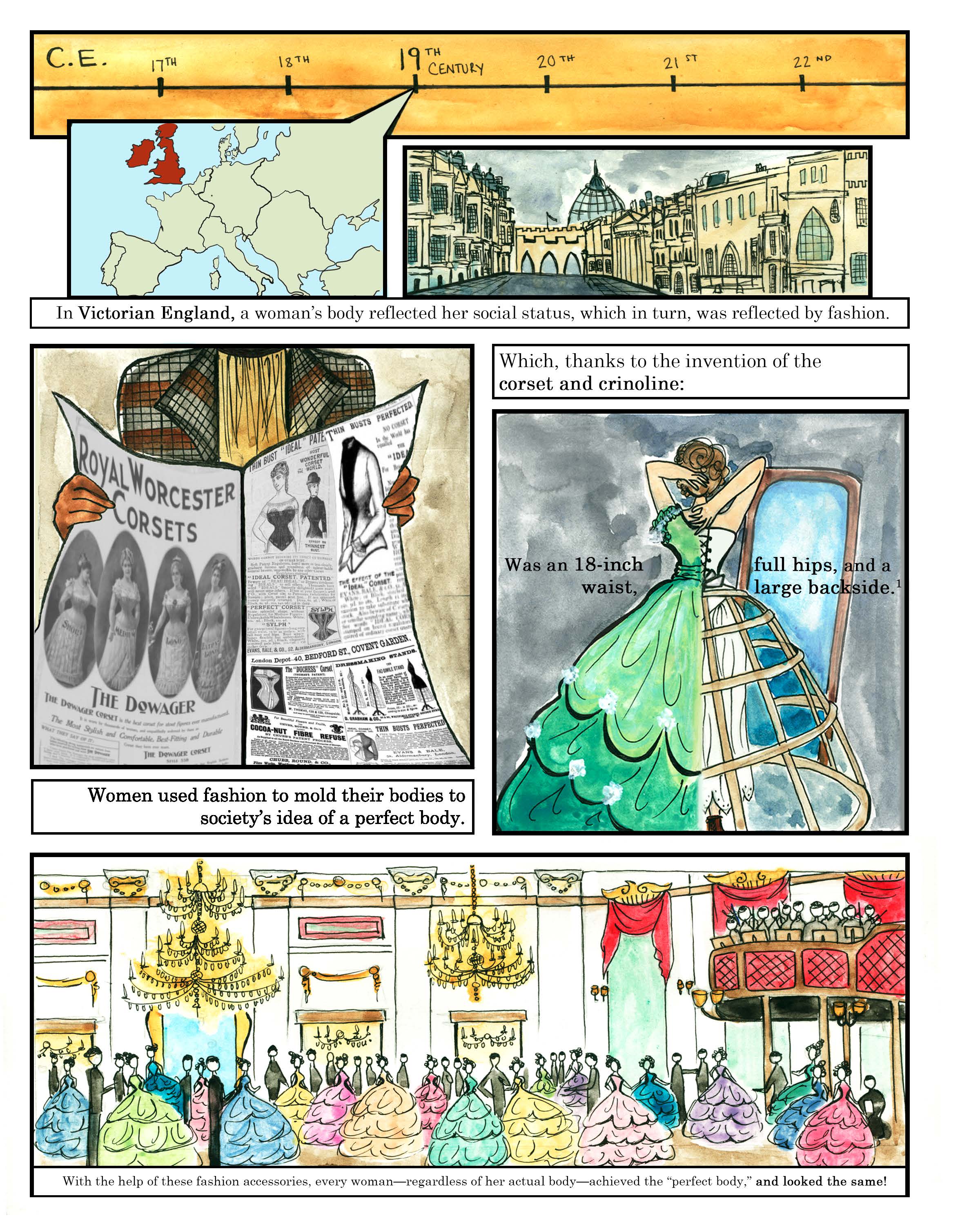
Figure 7. Victorian Ideal, panel 2
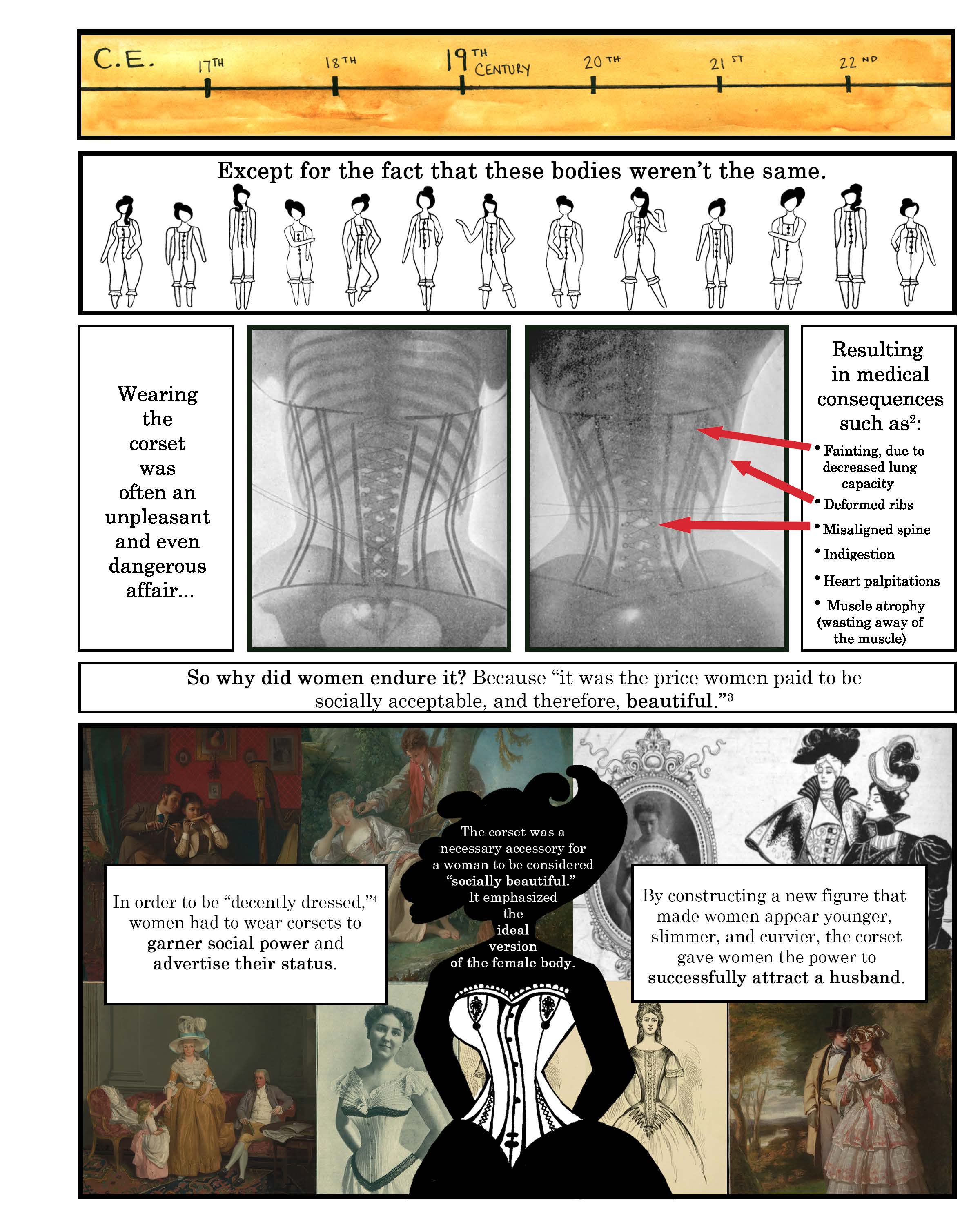
Other historical case studies, such as the Tang Dynasty in China, tell similar stories of the relationships between women’s bodies and sociocultural pressures.
Figure 8. Tang Dynasty, panel 1
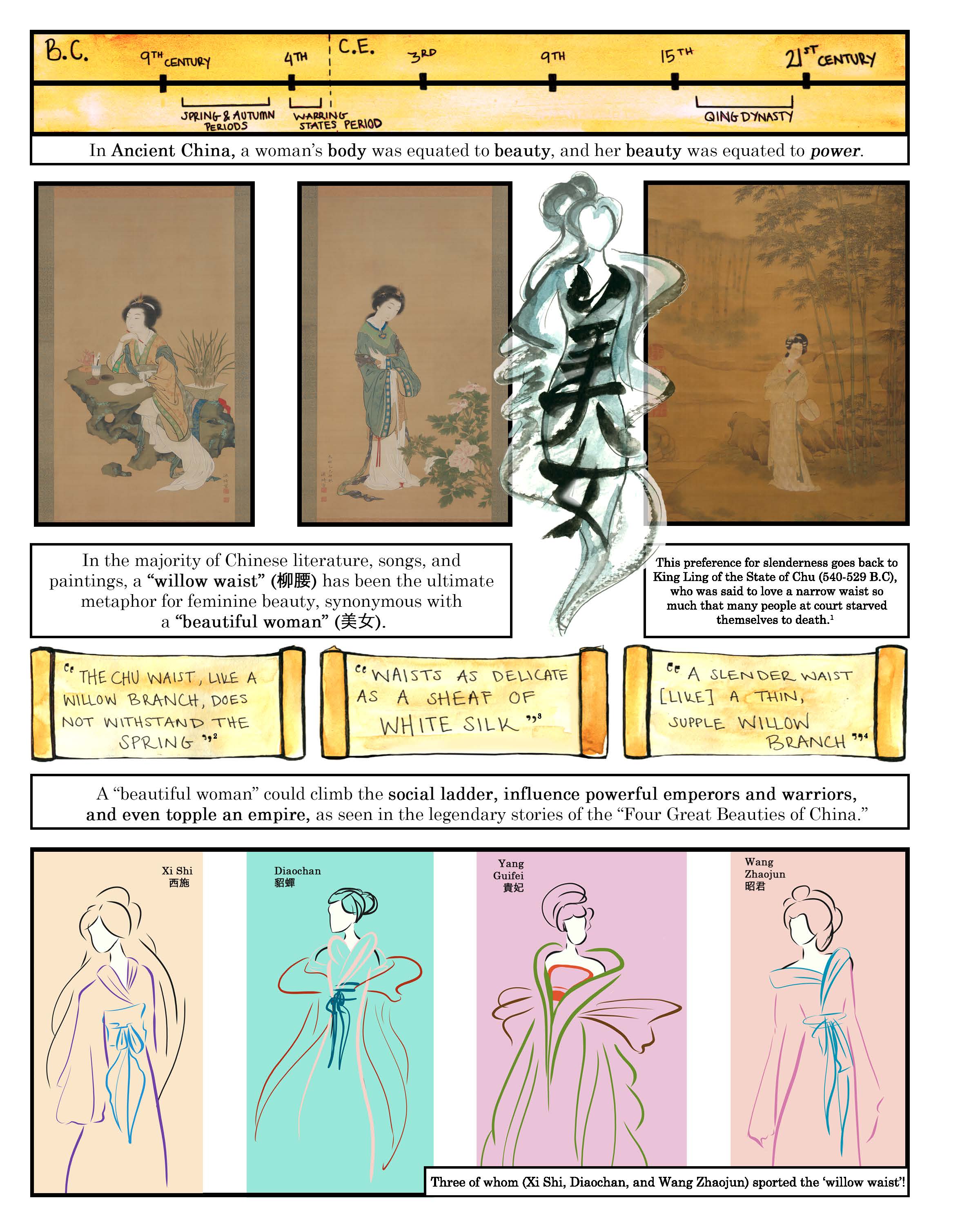
Figure 9. Tang Dynasty, panel 2
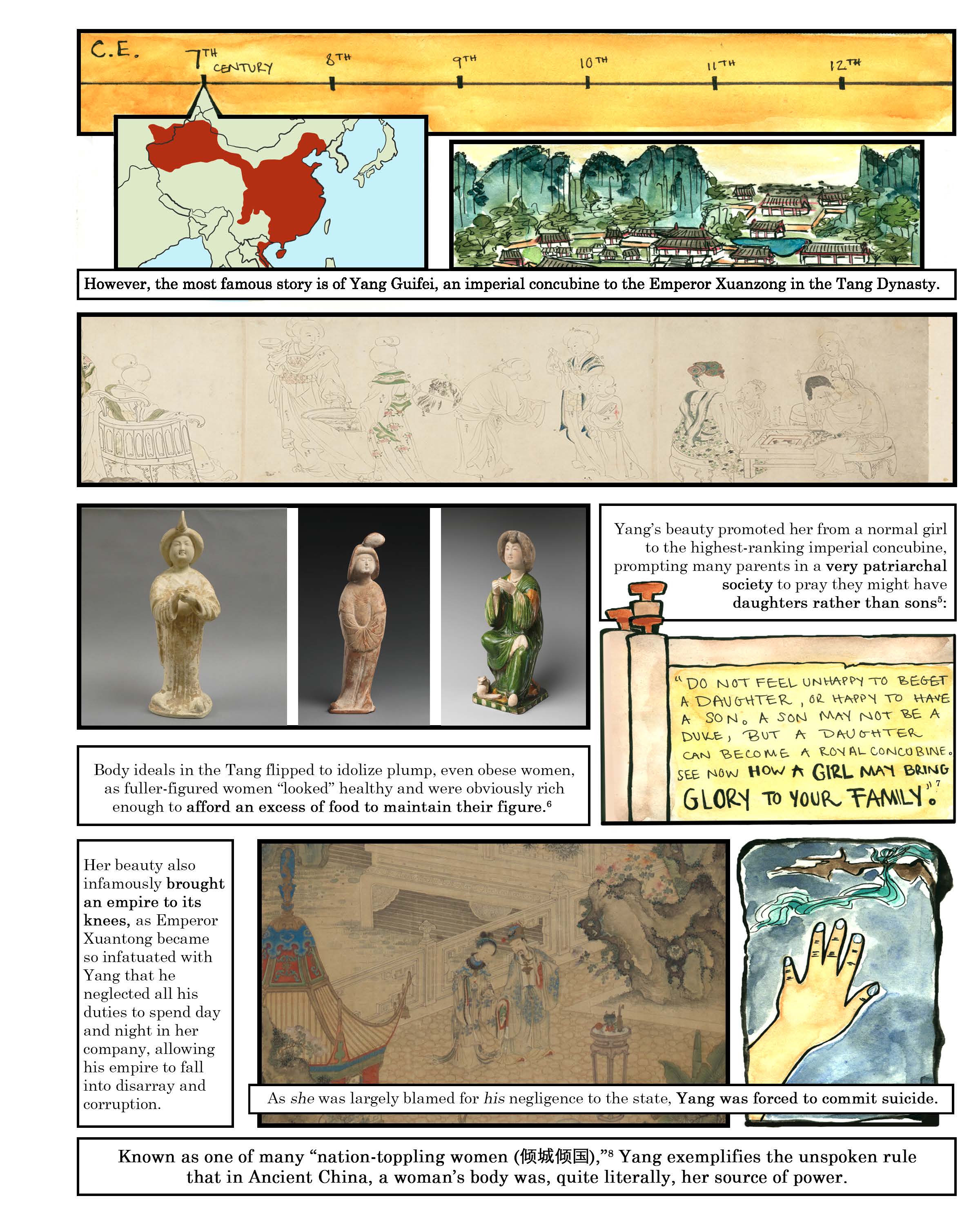
Parallels to Today
Somehow, my mom already understood society’s dirty secret: we favor the beautiful. She wanted me to be successful, and, for her, beauty was the best route to success.
Figure 10. Slim Chance of Success
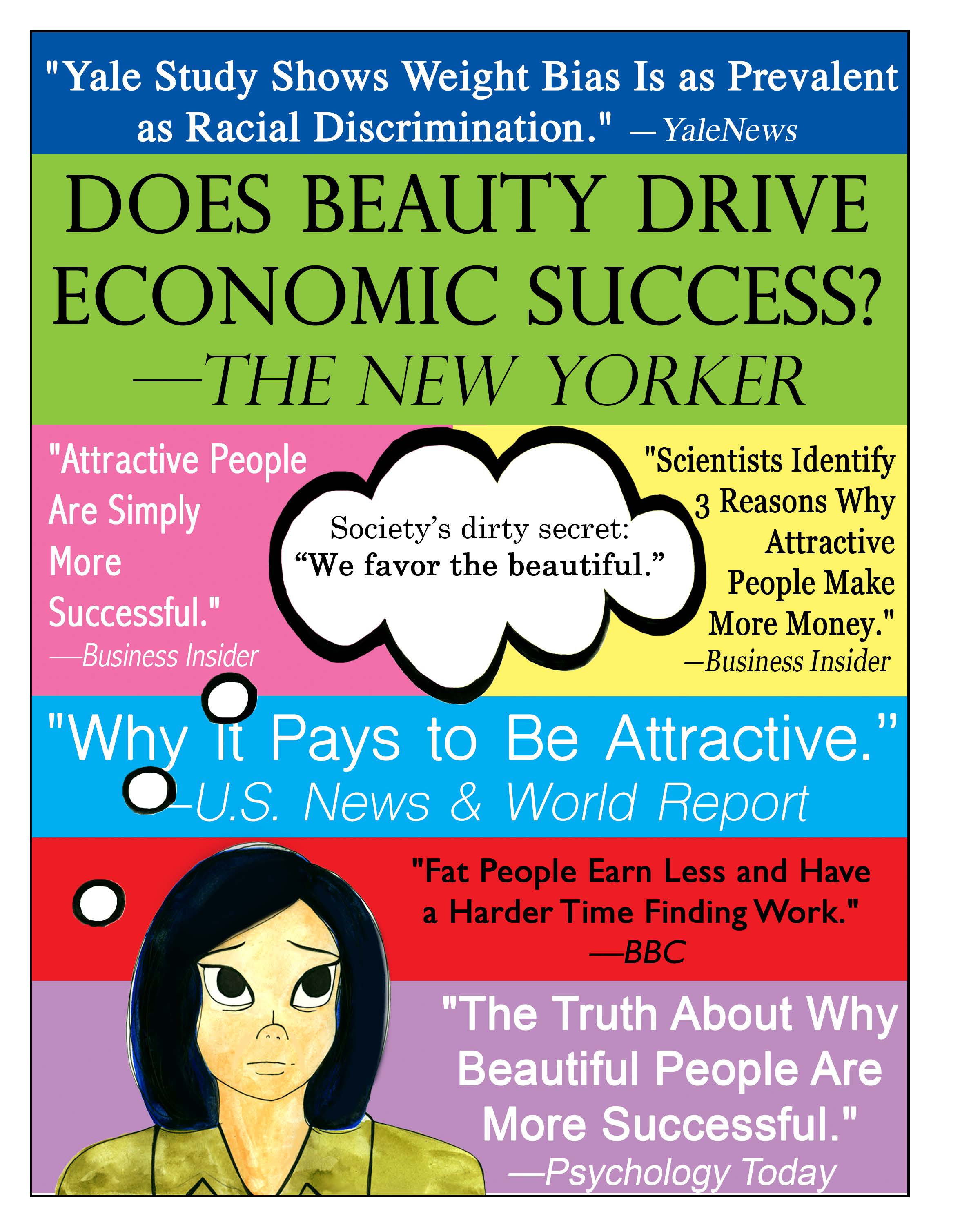
The constant comments my mom made about my body were not meant to shame me; they were reminders for her that she wasn’t doing her job of making sure I was ready to face a world full of criticisms and biases. When social and cultural factors dictate how a woman should look, more than just her self-esteem is damaged. She allows a part of her identity to be overwritten by social standards, causing a deeper type of harm that Hilde Lindemann Nelson terms infiltrated consciousness. As Nelson writes in her book, Damaged Identities, Narrative Repair, “A person’s identity is injured when she endorses, as a portion of her self-concept, a dominant group’s dismissive or exploitative understanding of her group, and in consequence loses or fails to acquire a sense of herself as worthy of full moral respect.”25 Accordingly, poor body image is more sinister than just not feeling happy with the way one looks. As discussed earlier, physical bodies are social bodies; beauty is linked to our perceptions of health, wealth, power, and overall success, which affect the range of decisions available to women and women’s overall views of their capabilities, strengths, and worth.
Ending Body Image Tyranny
Poor body image is currently a worldwide public health crisis disproportionately affecting women and girls.26,27,28 We must re-evaluate how we see, treat, and think of our bodies. History helps expose ideals of women’s beauty as arbitrary, which suggests the fluidity and subjectivity of the very notion of perfection.
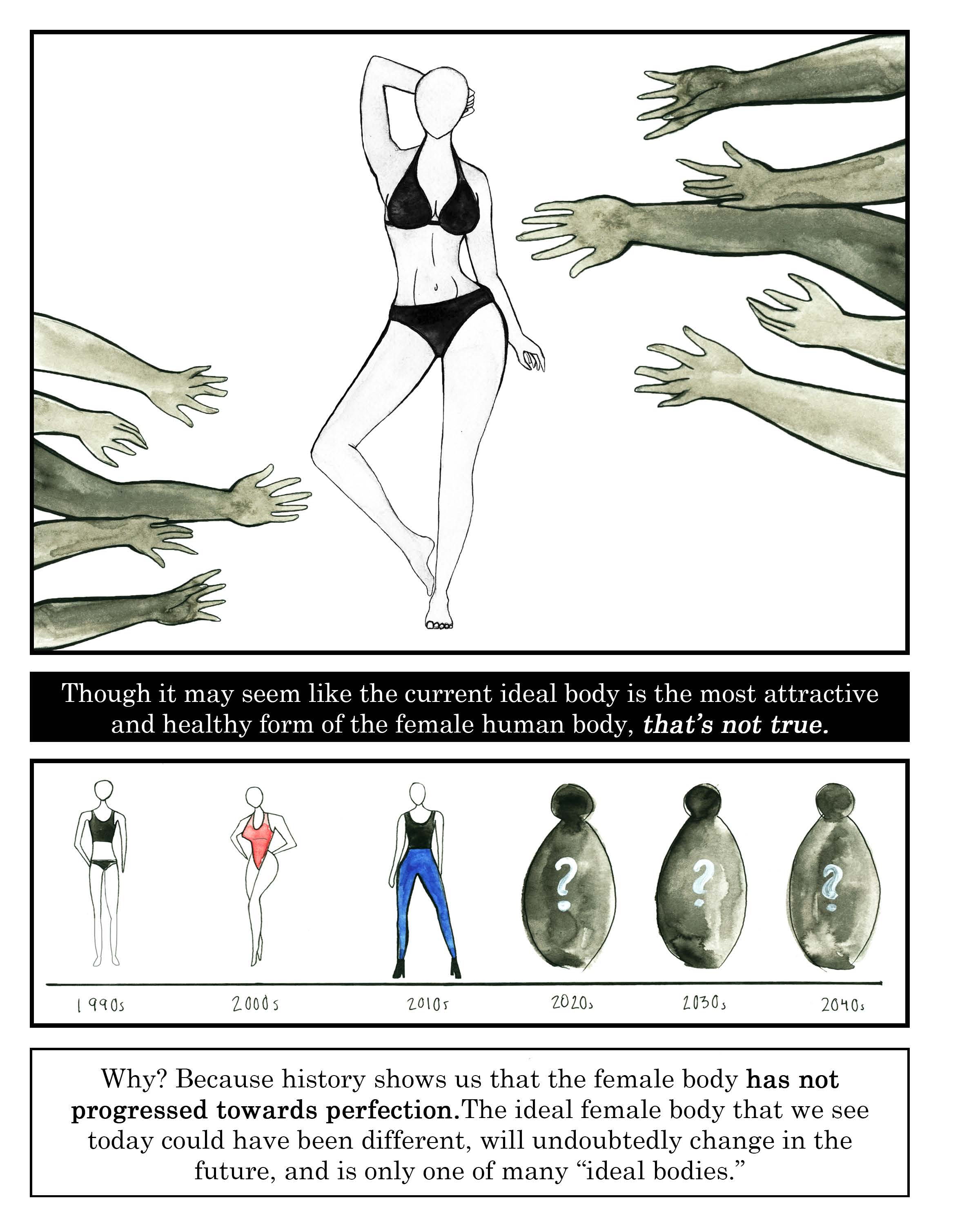
Education about this history and its influence on women’s and girls’ identities, self-conception, and health can promote open conversation and perhaps change for the better how parents talk to their children about their bodies.
Figure 12. Difference is Normal, panel 1
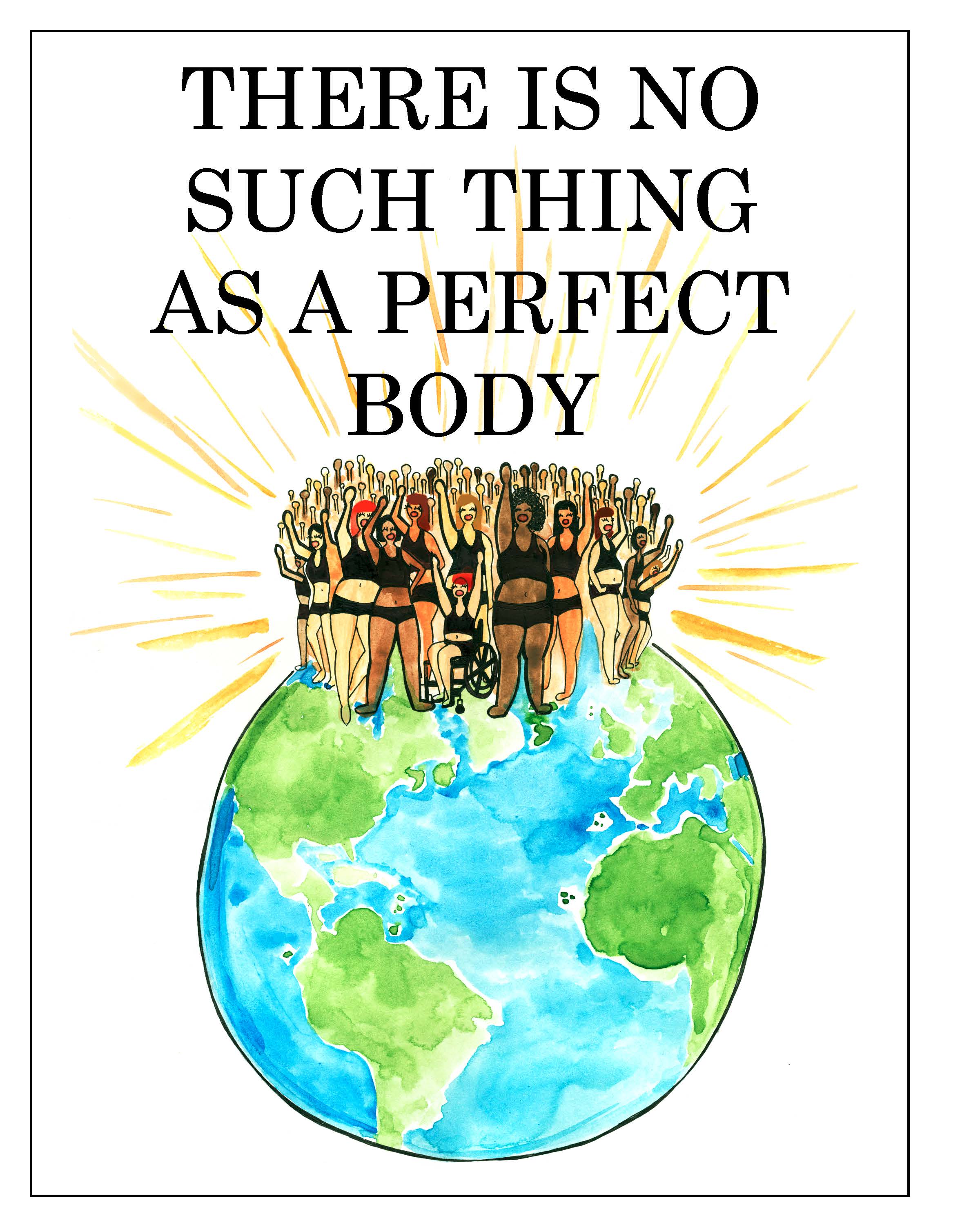
Figure 13. Difference is Normal, panel 2
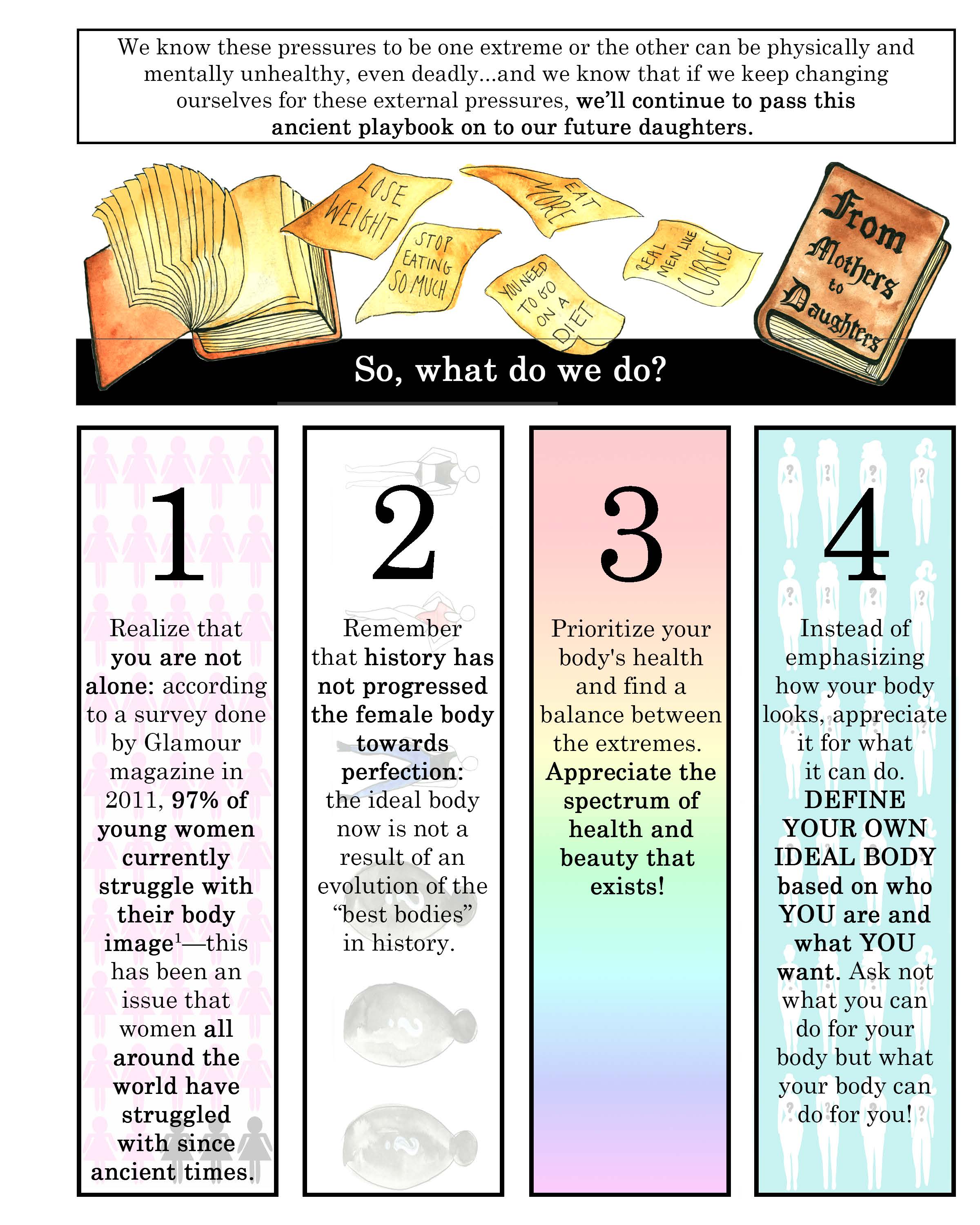
The Body Issue is intended to help readers better understand the importance of valuing self-validation over social validation with respect to their bodies and to decide for themselves the terms on which they’d like to think about their own bodies in diverse social, cultural, and ever-changing environments.
Figure 14. Talk

Figure 15. Me
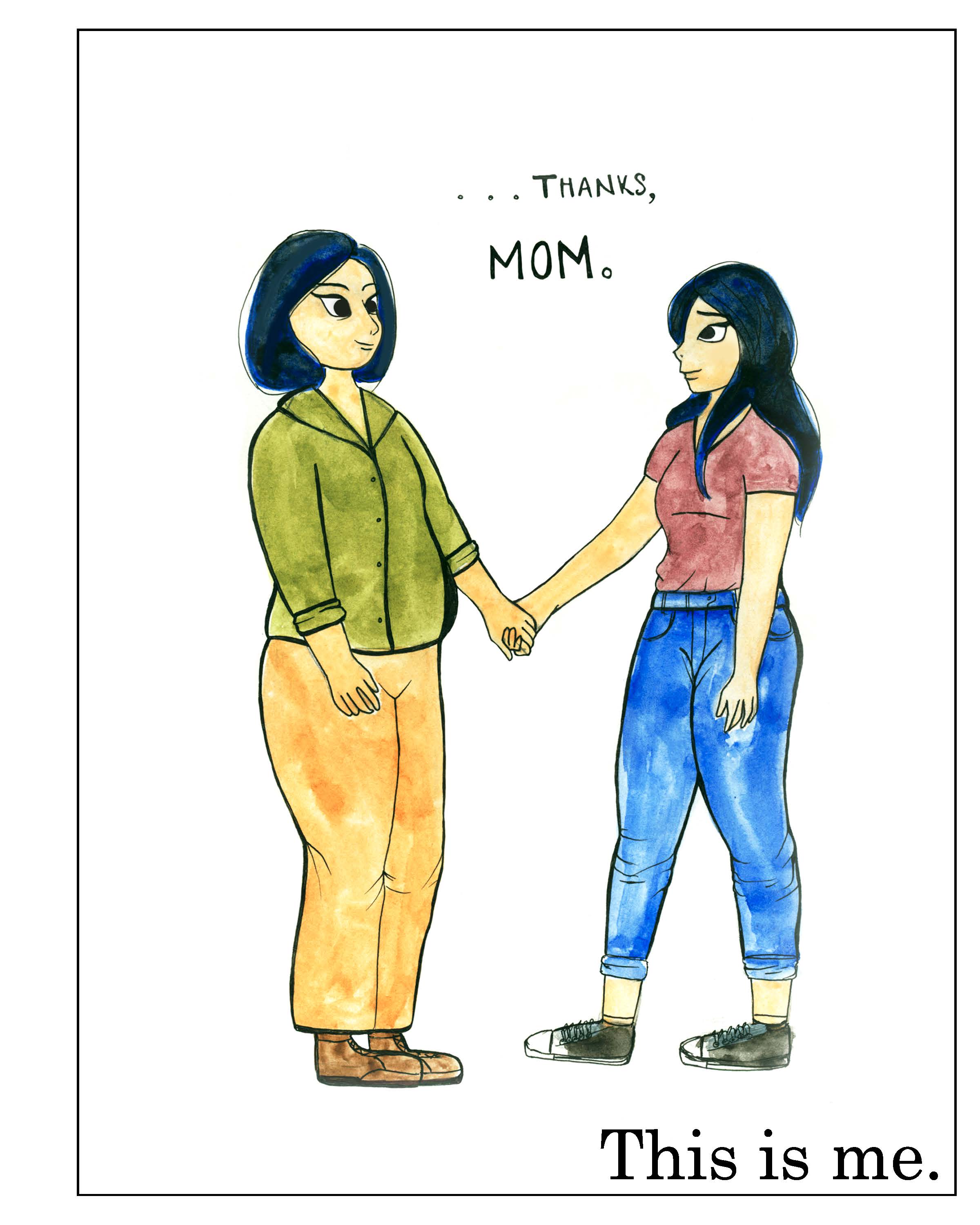
References
-
Bullot A, Cave L, Fildes J, Hall S, Plummer J. Mission Australia Youth Survey Report 2017. https://www.missionaustralia.com.au/publications/youth-survey/746-youth-survey-2017-report/file. Accessed August 14, 2019.
-
Perrens B, Robbins A, Fildes J, Ivancic L, Wearring A, Cave L. Mission Australia Youth Survey Report 2013. https://www.missionaustralia.com.au/publications/youth-survey/198-mission-australia-youth-survey-2013/file. Accessed August 14, 2019.
-
Fildes J, Robbins A, Cave L, Perrens B, Wearring A. Mission Australia Youth Survey Report 2014. https://www.missionaustralia.com.au/publications/youth-survey/314-mission-australia-s-youth-survey-2014/file. Accessed August 14, 2019.
-
Cave L, Fildes J, Luckett G, Wearring A. Mission Australia Youth Survey Report 2015. https://www.missionaustralia.com.au/publications/youth-survey/413-mission-australia-youth-survey-2015/file. Accessed August 14, 2019.
-
Bailey V, Baker, A-M, Cave L, Fildes J, Perrens B, Plummer J, Wearring A. Mission Australia Youth Survey Report 2016. https://www.missionaustralia.com.au/publications/youth-survey/677-mission-australia-youth-survey-report-2016/file. Accessed August 14, 2019.
-
Craike M, Young JA, Symons CM, et al. Trends in body image of adolescent females in metropolitan and non-metropolitan regions: a longitudinal study. BMC Public Health. 2016;16(1):1143.
-
Wallace K. Kids as young as 5 concerned about body image. CNN. February 13, 2015. https://www.cnn.com/2015/02/13/living/feat-body-image-kids-younger-ages/index.html. Accessed March 16, 2019.
-
Tatlow D. On social media in China, size 0 doesn’t make the cut. New York Times. March 18, 2016. https://www.nytimes.com/2016/03/19/world/asia/china-paper-waist-challenge.html. Accessed May 27, 2019.
- Coker E, Abraham S. Body weight dissatisfaction: a comparison of women with and without eating disorders. Eat Behav. 2014;15(3):453-459.
- Neumark-Sztainer D, Paxton SJ, Hannan PJ, Haines J, Story M. Does body satisfaction matter? Five-year longitudinal associations between body satisfaction and health behaviors in adolescent females and males. J Adolesc Health. 2006;39(2):244-251.
-
Mond J, Berg P, Boutelle K, Hannan P, Neumark-Sztainer D. Obesity, body dissatisfaction, and emotional well-being in early and late adolescence: findings from the project EAT study. J Adolesc Health. 2011;48:378.
- Jansen W, van de Looij-Jansen PM, de Wilde EJ, Brug J. Feeling fat rather than being fat may be associated with psychological well-being in young Dutch adolescents. J Adolesc Health. 2008;42(2):128-136.
-
Daniels J. Weight and weight concerns: are they associated with reported depressive symptoms in adolescents? J Pediatr Health Care. 2005;19(1):33-41.
- Paxton SJ, Neumark-Sztainer D, Hannan PJ, Eisenberg ME. Body dissatisfaction prospectively predicts depressive mood and low self-esteem in adolescent girls and boys. J Clin Child Adolesc Psychol. 2006;35(4):539-549.
- Jones EJ, Buckner E, Miller R. Chronological progression of body dissatisfaction and drive for thinness in females aged 12 to 17 years of age. Pediatr Nurs. 2014;40(1):21-25.
-
Liu W, Lin R, Guo C, Xiong L, Chen S, Liu W. Prevalence of body dissatisfaction and its effects on health-related quality of life among primary school students in Guangzhou, China. BMC Public Health. 2019;19:213.
-
Parker R. The female body and body image: a historical perspective. In: Parker R. Women, Doctors and Cosmetic Surgery: Negotiating the “Normal” Body. London, UK: Palgrave Macmillan; 2009:25-37.
-
Mason M. The Making of Victorian Sexuality. Oxford, UK: Oxford University Press; 1994.
-
Gatens M. Imaginary Bodies: Ethics, Power and Corporeality. London, UK: Routledge; 2013.
-
Sullivan DA. Cosmetic Surgery: The Cutting Edge of Commercial Medicine in America. New Brunswick, NJ: Rutgers University Press; 2001.
-
Steele V. The Corset: A Cultural History. New Haven, CT: Yale University Press; 2007.
-
Death from tight lacing. Lancet. 1890;135(3485):1316.
-
Effects of tight-lacing. Lancet. 1892;139(3568):151-152.
-
O’Followell L, Lion GC. Le Corset: Histoire, Médecine, Hygiène. Paris, France: A Maloine; 1908.
-
Nelson HL. Injured Identities, Narrative Repair [dissertation]. New York, NY: Fordham University; 2000.
-
Brennan M, Lalonde C, Bain J. Body image perceptions: do gender differences exist? Psi Chi J Undergrad Res. 2010;15(3):130-138.
- Mendelson B, Mendelson M, White D. Body-esteem scale for adolescents and adults. J Pers Assess. 2001;76(1):90-106.
- Johnstone A, Stewart A, Benson P, Kalafati M, Rectenwald L, Horgan G. Assessment of body image in obesity using a digital morphing technique. J Hum Nutr Diet. 2008;21(3):256-267.
